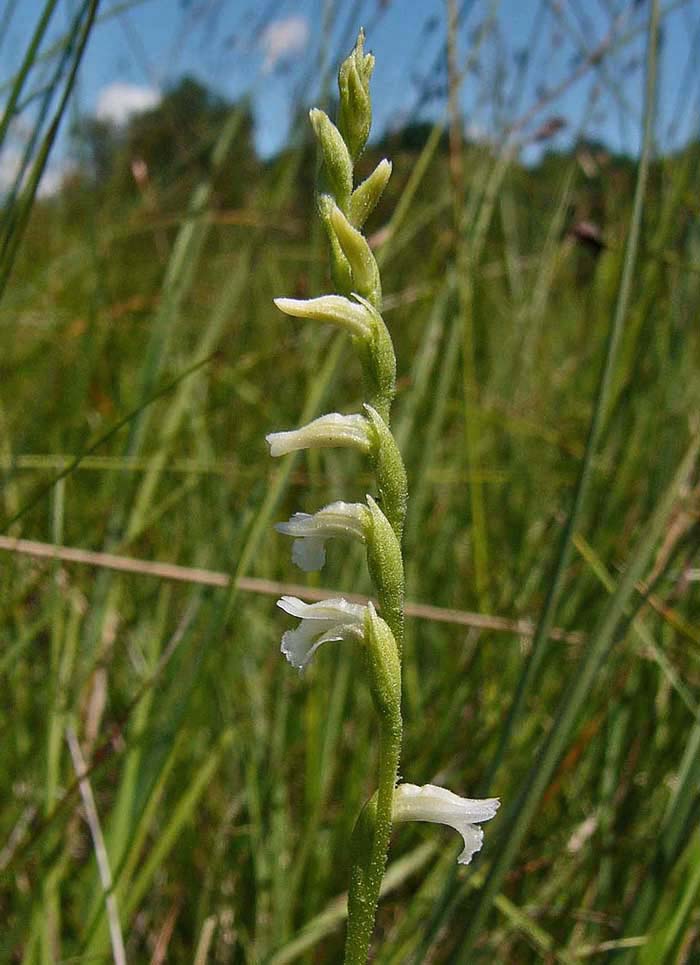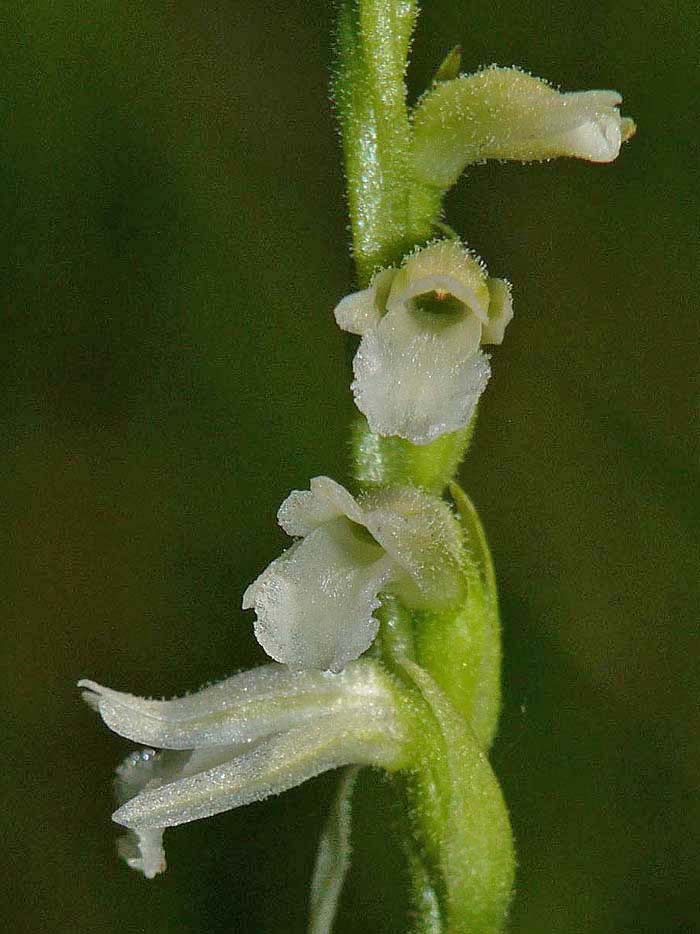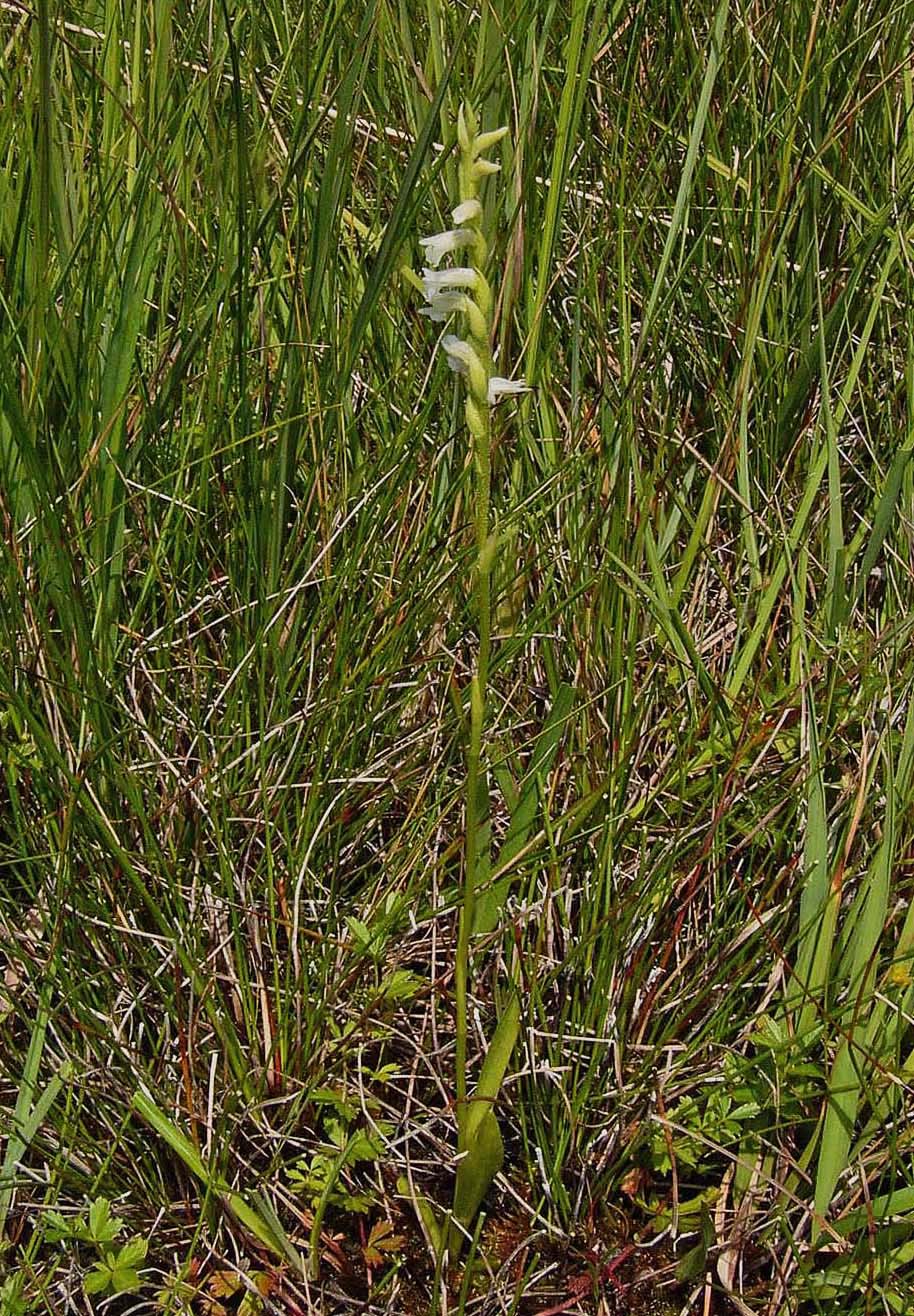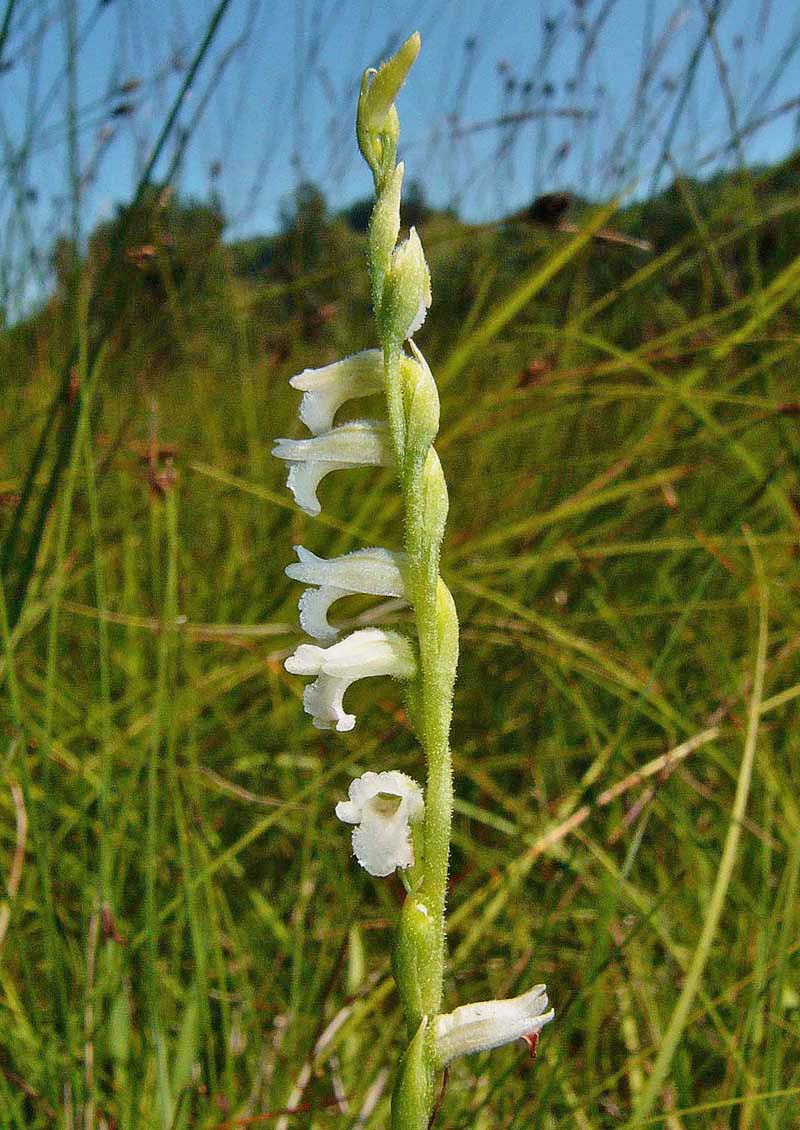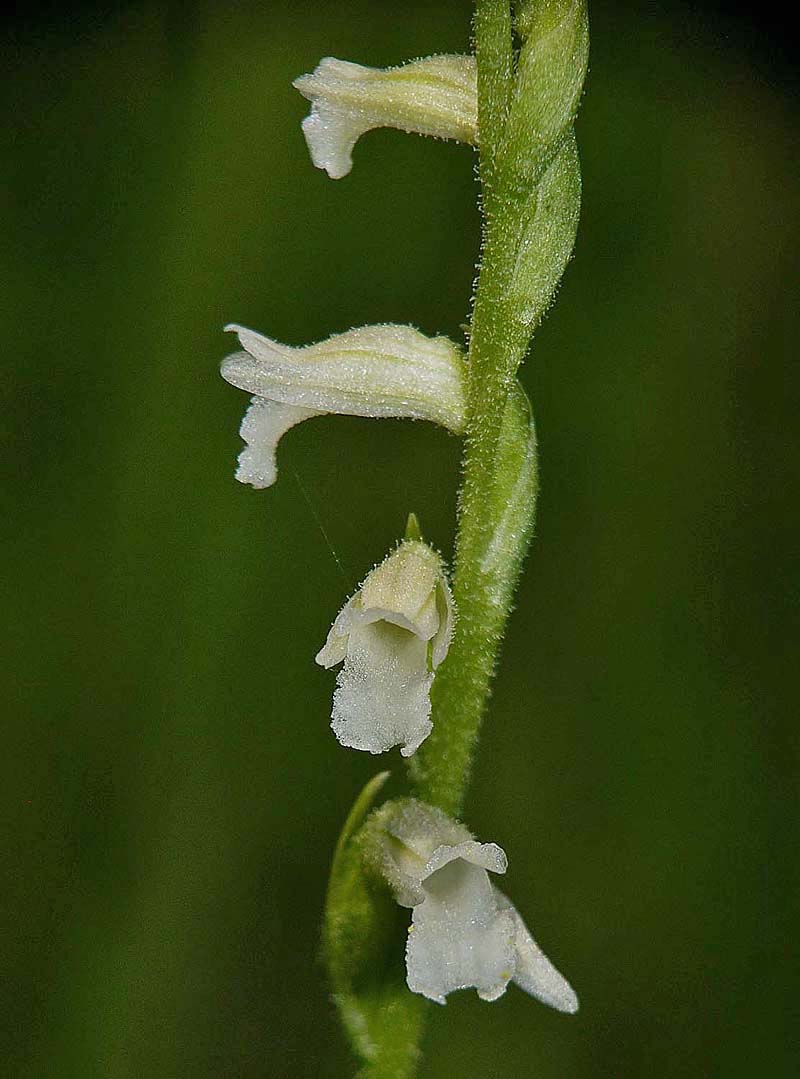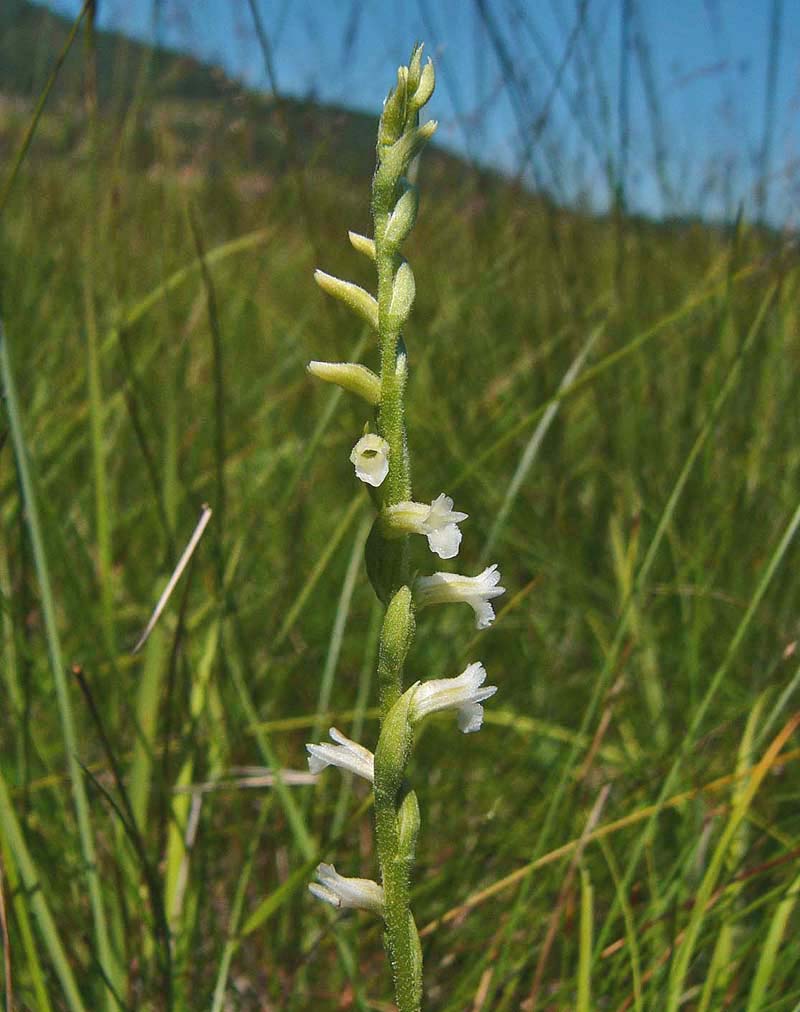S. aestivalis was
first described by L. C. M. Richard from Paris, France in 1798
and its name refers to its summer flowering season, its common name being Summer Lady's-Tresses.
This is now an extremely rare species and one which is unlikely to get any commoner with the passage of time. When P and J. Davies together with A. Huxley produced their Wild Orchids of Britain and Europe in 1983, they predicted S. aestivalis would be extinct in temperate Europe by the turn of the century and regrettably this has proved to be substantially correct. Its decline is due entirely to its habitat preferences, requiring as it does, damp to wet conditions on acidic or neutral soils, the fastest disappearing environment type in Europe.
S. aestivalis is not disimilar to the far more common S. spiralis, which although more frequently encountered in dry conditions on alkaline substrates, can occasionally stray into damper ground on mildly acidic soils. The New Forest and lowland heaths of Dorset are a good example and it was here that the last UK colony of S. aestivalis finally became extinct. The two species can be differentiated easily by the looser inflorescence of this species and by the colour of the stem which in S. spiralis is blue/grey rather than the mid green of S. aestivalis. Study of the flower also reveals that in the latter, the perianth and lip converge forwards to form a trumpet whereas in the former the lateral sepals splay outwards.
It would seem that the future survival of this species in Europe is dependant on conservation and habitat protection in the south of the continent where relatively healthy populations still survive. The pictures come from a colony in southern France and date from the first week of July, a month before S. spiralis.
This is now an extremely rare species and one which is unlikely to get any commoner with the passage of time. When P and J. Davies together with A. Huxley produced their Wild Orchids of Britain and Europe in 1983, they predicted S. aestivalis would be extinct in temperate Europe by the turn of the century and regrettably this has proved to be substantially correct. Its decline is due entirely to its habitat preferences, requiring as it does, damp to wet conditions on acidic or neutral soils, the fastest disappearing environment type in Europe.
S. aestivalis is not disimilar to the far more common S. spiralis, which although more frequently encountered in dry conditions on alkaline substrates, can occasionally stray into damper ground on mildly acidic soils. The New Forest and lowland heaths of Dorset are a good example and it was here that the last UK colony of S. aestivalis finally became extinct. The two species can be differentiated easily by the looser inflorescence of this species and by the colour of the stem which in S. spiralis is blue/grey rather than the mid green of S. aestivalis. Study of the flower also reveals that in the latter, the perianth and lip converge forwards to form a trumpet whereas in the former the lateral sepals splay outwards.
It would seem that the future survival of this species in Europe is dependant on conservation and habitat protection in the south of the continent where relatively healthy populations still survive. The pictures come from a colony in southern France and date from the first week of July, a month before S. spiralis.
